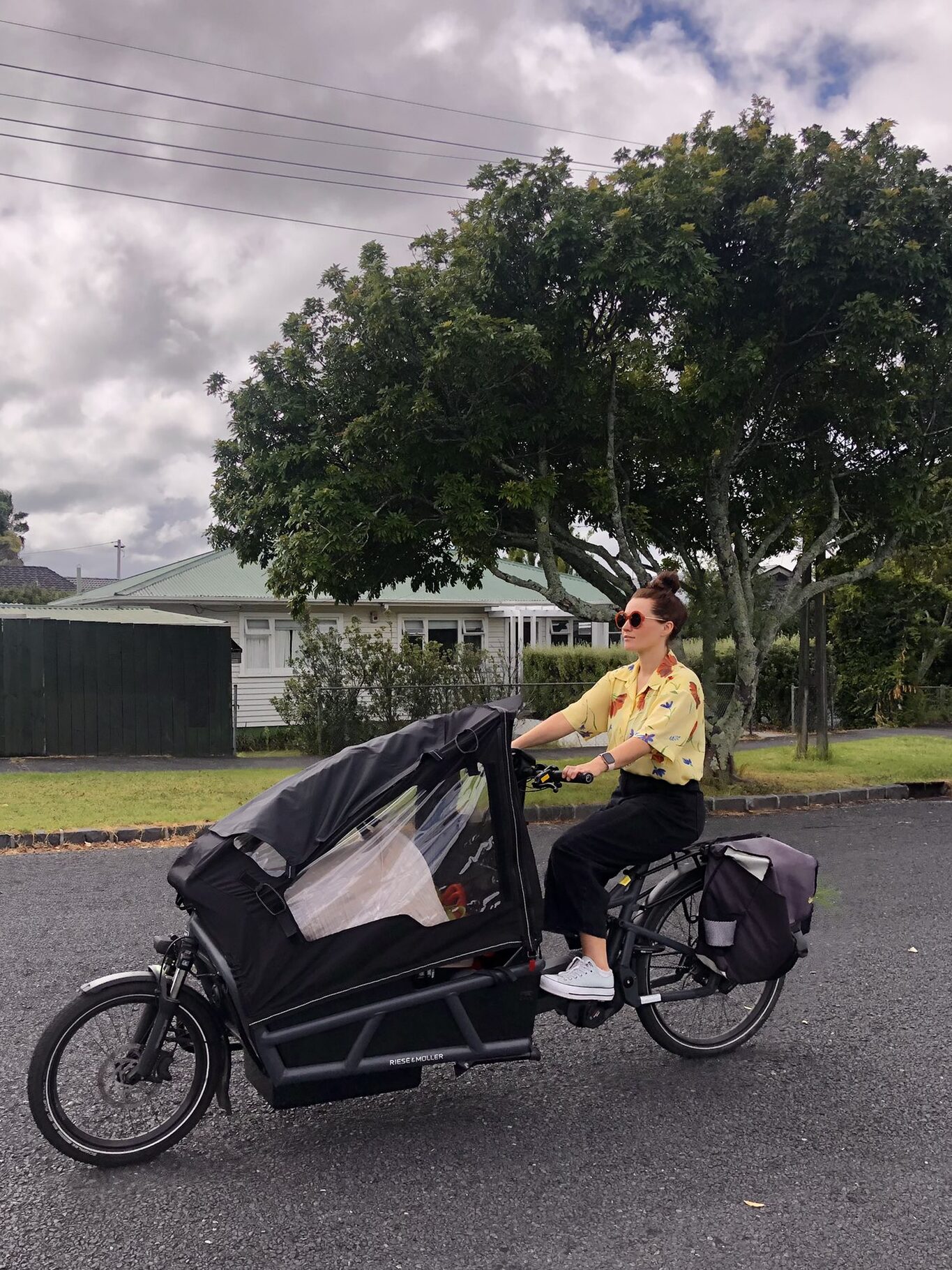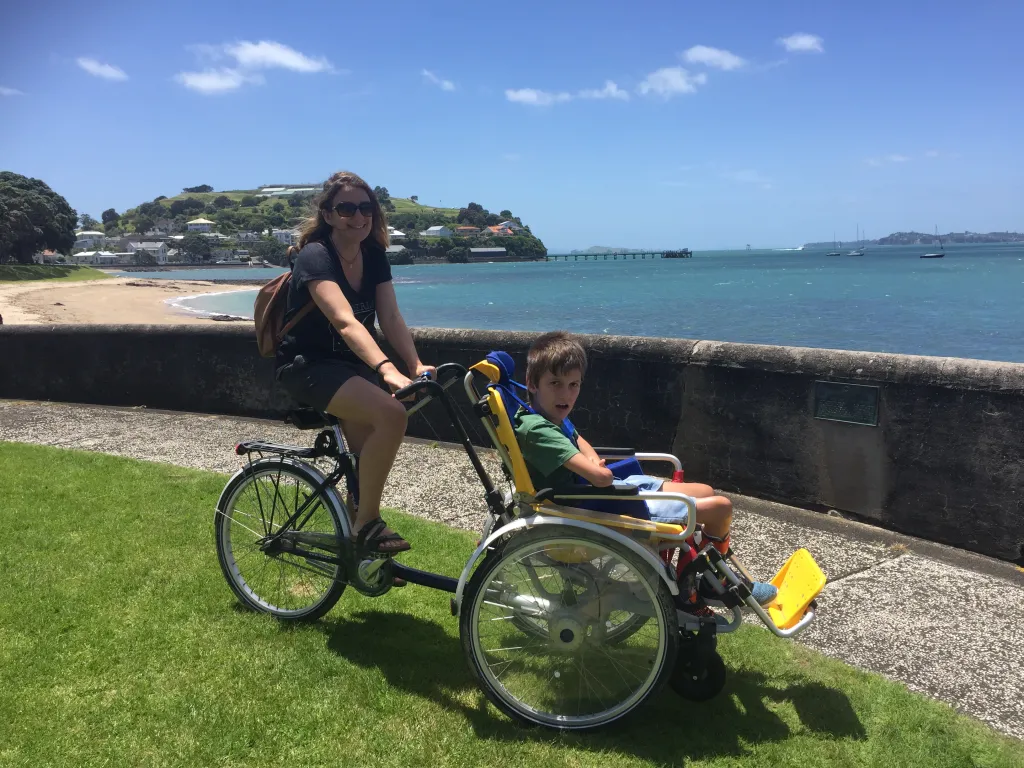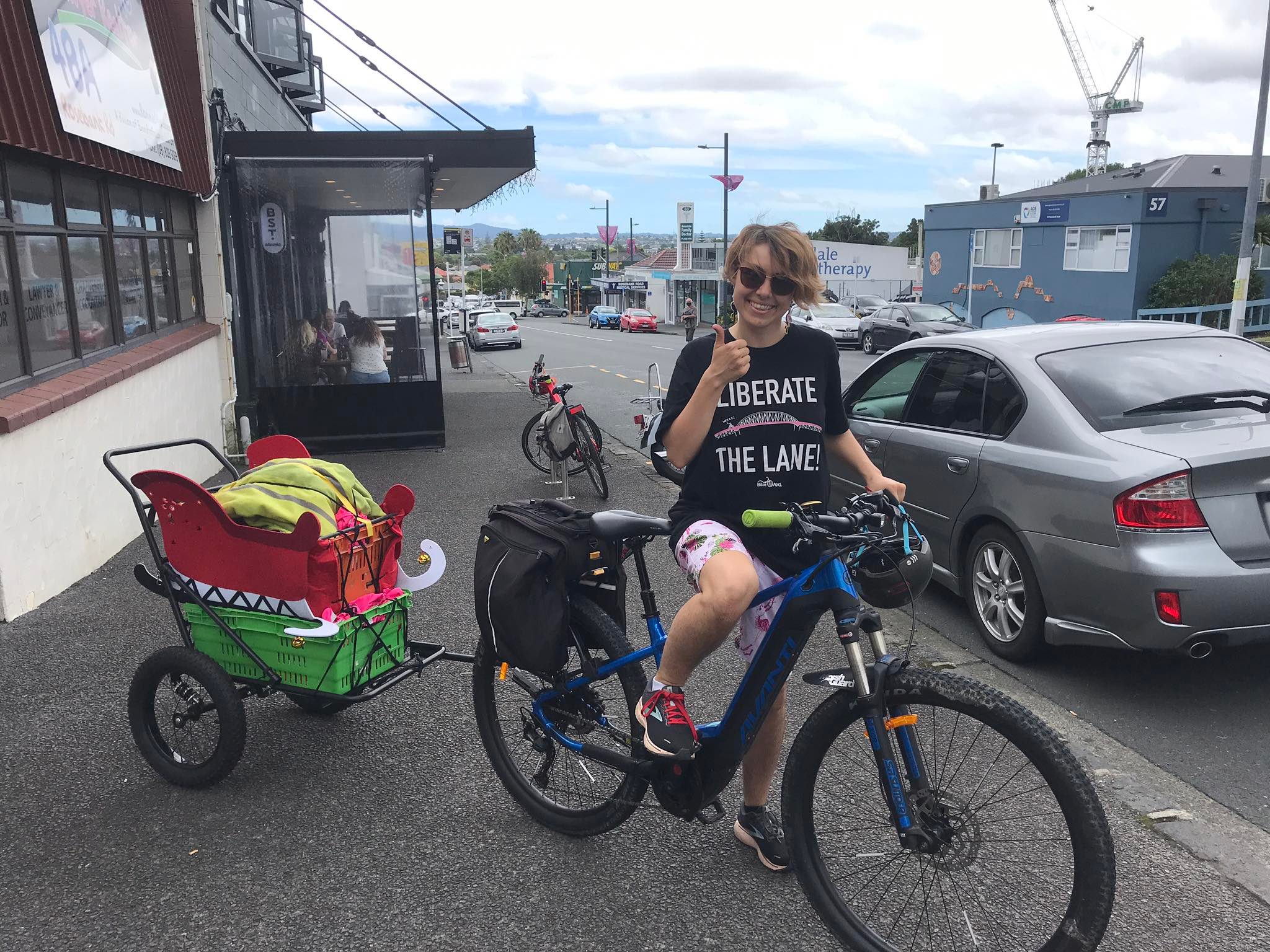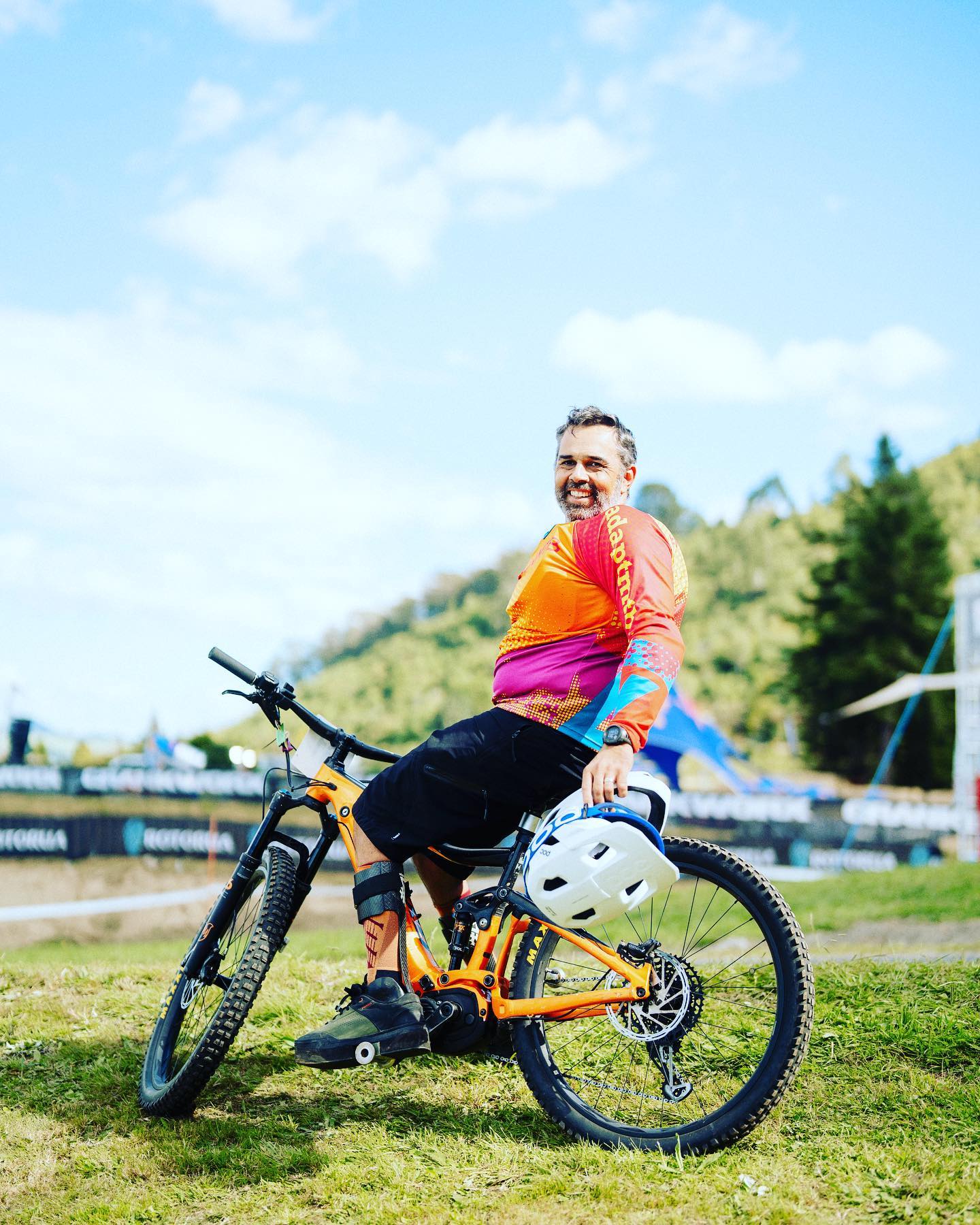MRCagney developed an awesome inclusive cycling board game – and we even got to try it out at one of our TryaCycle events! MRCagney created this game while they were developing Inclusive Cycling Guidance for Waka Kotahi NZTA. We’re super excited for this new, more inclusive, cycleway design guidance and we’ll let you know once it’s public!
At MRCagney, we love turning things into games. In the past we’ve made games to help people design low traffic neighbourhoods and for creating public transport networks. We think games are a great tool to help people, ah, get their head in the game. And they make transport planning fun, too! So, when we were developing Inclusive Cycling Guidance for Waka Kotahi, a game seemed like the obvious way to get the ideas out of the report and into people’s hearts and minds.
As part of the work we did to write the Inclusive Cycling Guidance, we interviewed several people who use adapted cycles. Then we created personas loosely based on the experiences of the people we interviewed. These personas are a powerful component of the guidance. They give the reader a deeper level of understanding of the complex needs of people with different kinds of impairments.
We wanted to take this experience of getting into someone else’s shoes (or wheels) further, and the personas became the seed of an idea for a board game. Lukas Adam who was a key team member on the project, developed a concept for a game that would send the personas on a perilous journey through the city, encountering all kinds of everyday obstacles and challenges. Marita Hunt, urban designer at MRCagney, turned the concept into a fun and engaging board game setup.
The game had its debut at the Transportation Group conference in March, where it won the People’s Choice Award for Best Learning Café.
What is the game hoping to achieve?
Design guidance documents are important for designers, planners, engineers, and community groups to gain a deeper understanding of designing for different situations and people. Inclusive cycling is a little-understood topic in the transport design world, so we think this work is incredibly important. But reading a 40 + page document is often not possible for many and as a result often standard dimensions and minimum widths are just taken out of these documents and applied to projects, sometimes without much thought.
Gamifying this type of guidance material offers better access to this information for a wider range of people and skill sets. It offers a fun and interactive way of engaging with some of the important reasons why the guide has been developed and highlights why the guide should be used in the design process to get the most accessible cycling infrastructure for everyone.
The personas are a key aspect in the guidance and in the game. In the past, mobility impairments have often been simplified down to ‘someone in a wheelchair.’ The personas help show the range of disability, which is not always visible. Someone riding any kind of bike, including a 2 wheeler, could have a range of complex needs in terms of what they can process and deal with in a street environment.
How is it played?
Four to eight people can play the game at one time, and it takes about 20 minutes to play. There are four personas, and each player selects a persona to play the game with. Each persona comes with a factsheet which outlines some personal information about them. It includes age, physical and cognitive capabilities, hearing and sight, location in NZ, and transport likes and dislikes.
The game involves a journey from home to the medical centre, via a stop-off at the café to catch up with a friend. The players’ challenge is to get their persona all the way to the medical centre without too many mishaps. Along the way there are different coloured spaces which relate to four different types of access issues that each persona could encounter along their journey. Issues include cycle parking issues, geometry and surface issues, access issues or intersection or legibility issues. An issue might be something like:


A dice is thrown and the personas move along the board and encounter issues and obstacles. Each issue is read aloud, and the player needs to decide if their persona can get through. If they can’t, they might need to miss a turn, go back a few spaces, or even abandon their journey and head home. The game offers a great opportunity for discussions, as there are no right and wrong answers.
Some real life personas – an addendum from Bike Auckland
Bike Auckland has put together some ‘personas’ of real people who live and cycle in Tāmaki Makaurau Auckland – with permission of course. Have a think about their access requirements and what barriers they may face to cycling for their various journeys.
Tiffany Robinson – Women in Urbanism

Partly because she grew up in cities which were dangerous and lacked safe cycling infrastructure, Tiffany didn’t learn to ride a bike until around 11 years ago, at age 35. She also has weak knees due to old injuries, and these make her feel less confident about her balance. Because of this, Tiffany is uncomfortable with riding a two wheeled bike and rides an e-trike instead, which she has named Trinity.
Tiffany likes the freedom of cycling, and she likes to feel the wind. She loves that she can do it, even though many of our cycleways have physical barriers that prevent a trike from being able to easily use them. She believes in making biking a fun experience by doing things like listening to music (through a speaker) whilst riding.
Barriers:
- Exposed drains
- Lack of appropriate curb cuts
- Lack of a safe connected cycle network
- Lack of accessible cycle parking (trikes are wider)
- Spaces that aren’t wide enough for a trike to fit comfortably
- Sudden sharp turns (especially with a sideways slope) which can tip the trike
Tiffany is a transport planner as well as a committee member of Women in Urbanism. Women in Urbanism is committed to amplifying the voices of women, girls, and nonbinary people to inform the way we design our cities.


Emma McInnes – Women in Urbanism

Emma also learned to ride a bike later in life, finding it difficult to overcome body image issues, traffic, and feeling unsafe being a woman riding by herself. When Emma bought an E-bike she found that it helped her to gain confidence and ride more often. But, like many who are young and appear able-bodied, having an e-bike made her a target for judgemental comments. She is a cruiser rider – someone that is quite happy to go at a gentle pace, in a comfortable upright position. Because of this casual pace she has experienced harassment from other cyclists who are impatient to pass her.
Emma continued to cycle whilst pregnant, and now cycles with her baby on-board. Her young daughter absolutely hates being inside a car, but loves being in the e-cargo bike, so sometimes she uses it to help send her to sleep! Being a mother and taking her baby out on the bike made Emma even more conscious of the danger of motor traffic. She will now stay on the quiet back streets, becoming restricted by the lack of protected cycleways. Emma likes riding as it takes you from door to door, she has a special carrier on her bike for her daughter to lie in while they cycle, and her daughter loves being out and engaging with nature.
Barriers:
- Lack of a safe connected cycle network
- Busy roads that are unsafe for children
- Harassment from cyclists and drivers
- Personal safety as a woman, especially with a young child
- Lack of accessible bike parking (cargo bikes are longer, wider, and heavier)
Emma is an urban designer and the Chair of Women in Urbanism. Women in Urbanism’s principles are for cities to be inclusive, equitable, diverse, sustainable, and safe, comfortable places to be in. This includes making sure our cycleways are accessible for people of all abilities, and that they feel safe for women and children.


Kimberly Graham – Grab Your Wheels

Kimberly has a physically disabled son who uses a wheelchair, and brings him along on bike rides as a way to further include him in family activities and social events. When Kimberly’s son was 11 they purchased a Duet Tandem Wheelchair Bike second hand from Canada, with funding from the Halberg Foundation. This bike is acoustic (not electric assist) which can be difficult with her son’s weight on the hills. As he has grown he has developed postural issues which can put a lot of weight onto one side of the bike, making it difficult for Kimberly to continue to steer straight. She has recently discovered the Stabilo Confortable Plus Duo Seating System which has helped to keep Finlay upright, so that his posture no longer affects the steering and balance of the bike. Now they just need to convert it to E-assist and they’ll be more free to continue exploring all over Tāmaki Makaurau Auckland.
Kimberly likes to check out lots of cycleways and often brings her son along for the ride. She finds that biking together provides inclusion, as they can ride as a family. Kimberly enjoys the freedom of cycling, and the convenience of commuting by bike to places close by.
Barriers:
- Exposed drains in protected cycleways
- Lack of a connected cycleway network
- Lack of curb cuts
- Places that are wheelchair inaccessible
- Train station lifts which are not large enough for the wheelchair bike
- Ferry onramps which are not wide enough for the wheelchair bike
- Ferries which do not have a sheltered space for the wheelchair bike on board
- Sudden sharp turns (especially with a sideways slope) which can tip the bike
- Lack of accessible bike parking (the wheelchair bike is longer, wider, and heavier)
Kimberly Graham is an accessibility travel writer and a general accessibility advocate. Kimberly runs a blog called Grab Your Wheels, which is focused around accessible travel.


Fiain d’Leafy – Bike Auckland

Fiain has a condition which gives them pain flare-ups in their joints. When their joints get bad they can find it difficult to walk, but, because cycling isn’t weight bearing, they can usually still cycle. Fiain points out that if they drove or took a bus, they would still need to walk from the carpark or bus stop to their destination, which can be too painful if their joints are in a flare up. But, usually, they can cycle right to the door of their destination. Cycling for transport has meant that they can stay mobile, active, and continue to participate in life.
Like Emma, they also experienced a lot of negative comments when they were saving for an E-bike, because they look able-bodied and young. But the (two-wheeled) E-bike gave them the ability to travel much further, more often, and gave them assurance that when they cycled somewhere they would still be able to get back home afterwards. This enabled them to let go of their car, and they now rely solely on their E-bike, bike trailer, and the occasional public transport or Uber trip, which is much more affordable than owning a car.
Fiain is usually comfortable cycling on roads with cars, but finds trucks highly intimidating. They like to travel on a direct route to their destination, but if there is a protected cycleway along the way they will use it. They find driving anxiety-inducing but riding a bike makes them feel free and happy.
Barriers:
- Roads which are used regularly by trucks
- Areas with ‘Cyclists Dismount’ signs
- Lack of bike parking close to destinations
- Stair ramps (require too much wrist strength)
- Cycle access which requires the heavy e-bike to be lifted (eg. onto Te Huia train)
- When relevant: spaces that aren’t wide enough for a bike trailer
Fiain is a cycle advocate with Bike Auckland, and has a passion for inclusivity. Bike Auckland is a non-profit who advocate for safer streets; with the aim of empowering people of all ages and abilities to cycle.


James Littlejohn – #AdaptMTB

James is a partial paraplegic due to an accident 23 years ago, and he enjoys participating in adaptive sports; including mountain biking, adaptive rowing and snow sports. He rides an e-assist two-wheeled mountain bike with orthotics to keep his feet securely attached to the modified pedals, both for sport and for his commute. James has also experienced harassment and judgement when riding his E-bike and also when using his segway. Because his bike is a two wheeler, he doesn’t experience much difficulty with accessibility for the cycleways we have. But, he’s aware that our cycleways are inaccessible for many different types of bikes, and there is a lot that needs to be improved to give people the freedom to choose to cycle in our region.
Barriers:
- Lack of a connected cycleway network
- Harassment from cyclists and pedestrians
- Lack of close bike parking outside destinations
- Debris and glass in cycleways and sides of roads
James is one of the co-founders of #AdaptMTB, a community for adaptive mountain bikers, who encourage and advocate for more accessible mountain bike trails and events. They are doing amazing mahi, working with other stakeholders across Aotearoa to make sure trail standards are inclusive for all bike types. #AdaptMTB became a registered charity in 2021, and since then they have held three “Give it a go” events in Rotorua, giving roughly 150 people (of varying ages and abilities) the opportunity to try adaptive mountain biking.



